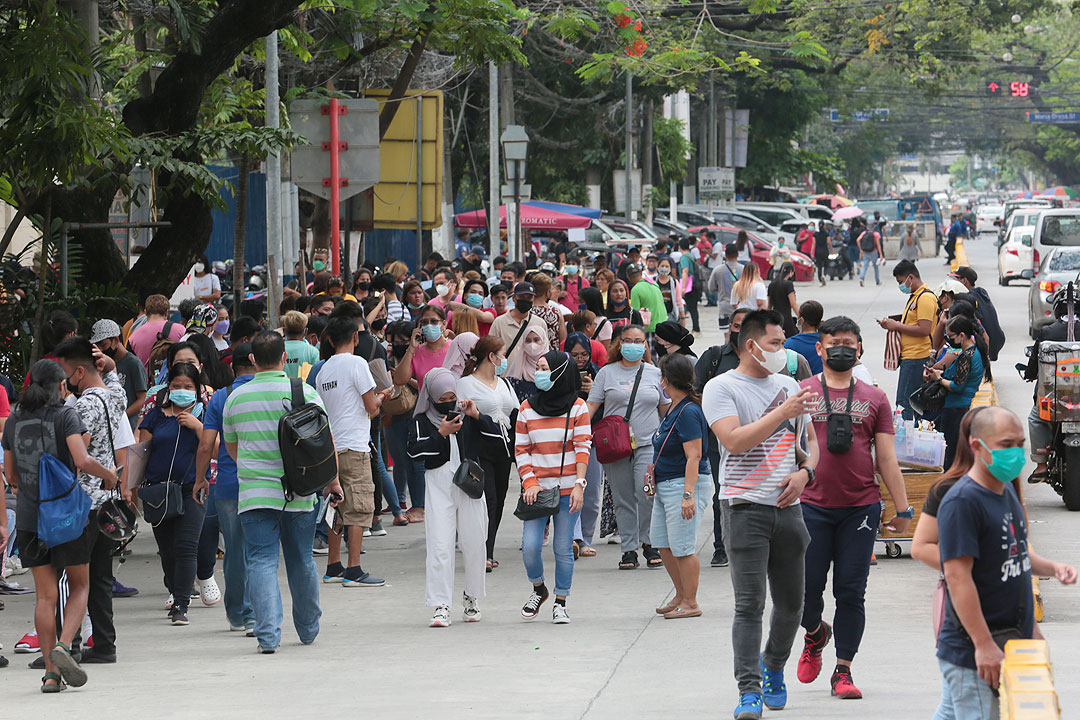
Static
By Marvin Tort

Metro Manila mayors met Tuesday night, according to news reports quoting Parañaque City Mayor and Metro Manila Council (MMC) Chairman Edwin Olivarez, and “unanimously” voted to downgrade the National Capital Region to Alert Level 1 starting next week, March 1. Metro Manila is under Alert Level 2 until Feb. 28.
Personally, I have misgivings about the recommended downgrade. I believe we need to give ourselves a longer runway. Perhaps until after Easter on April 17. That is, if we can maintain the downtrend in COVID-19 cases and related hospitalizations until then. To me, the question is not whether the NCR (National Capital Region) qualifies for a downgrade by March 1, but whether Metro Manila and its residents are actually ready for further easing of restrictions from then, and onwards.
Timing is crucial, especially now that school is still ongoing but mostly online; public transportation is not at 100% capacity; and, fuel prices are at all-time highs and continue to rise. Add to this the start of the campaign season for the 2022 elections: Feb. 8 for national candidates, and March 25 for local candidates.
I would not want to think the mayors are batting for Level 1 by next week mainly as a way to court more votes or to make it easier for their supporters to prepare, and then go out and campaign starting March 25. I am worried that campaign sorties, and similar activities, under Alert Level 1 can become super-spreader events for COVID-19, and might just prompt another surge. The same goes for Holy Week events under Alert Level 1.
By government definition and rules, Alert Level 1 can be recommended for areas “wherein case transmission is low and decreasing, and total bed utilization rate and intensive care unit utilization rate is low.” This is based on IATF (Inter-Agency Task Force for the Management of Emerging Infectious Diseases) Guidelines for the implementation of the Alert Level system nationwide. Given recent statistics, Metro Manila qualifies for a downgrade.
Under the same rules, Level 1 also means “intrazonal and interzonal movement shall be allowed without regard to age and comorbidities,” and “all establishments, persons, or activities, are allowed to operate, work, or be undertaken at full on-site or venue/seating capacity provided it is consistent with minimum public health standards; provided further, that face-to-face classes for basic education shall be subject to prior approval of the Office of the President.”
In short, under Alert Level 1, perhaps other than keeping masks on in public and best-efforts in maintaining physical distance, everything goes for Metro Manila businesses and residents. No more restrictions on capacity and movement. It will be as if COVID-19 is already a thing of the past, and that people need not worry about the virus anymore. While this may not really be the case, the downgrade will surely bring on the feeling that the battle is over and has been won.
Until the next surge occurs.
And this is where the problem lies for me. We have always been just a step ahead of the next COVID-19 surge. In the near future, COVID mutations will continue to outpace medical advances intended to eliminate the virus. Medical science will continue to play catch-up at least until the end of the year. And other than present ad hoc tools that have been in use since March 2020, nothing new has been implemented or has been put in place for the long term.
Under Alert Level 2, some local restrictions continue to apply with respect to “intrazonal and interzonal movement.” Also, establishments or activities are allowed only up to 50% indoor venue capacity for fully vaccinated individuals and those below 18 years of age, even if unvaccinated, and 70% outdoor venue capacity. Provided, that all workers/employees of these establishments are fully vaccinated against COVID-19 and minimum public health standards shall be strictly maintained.
By next week, however, if Metro Manila mayors will have their way, all these limits will be removed, including those on face-to-face or in-person classes for schools; in-person religious gatherings; licensure examinations; and transactions at government offices, among others.
As for the private sector, offices will resume work on site, and all restrictions will be removed on dine-in services; personal care establishments such as barbershops, hair spas, hair salons, and nail spas; fitness studios, gyms, and venues for individual non-contact exercise and sports; film, music, and television production; contact sports; funfairs or kid amusement industries such as playgrounds, playroom, and kiddie rides; and, venues with live voice or wind-instrument performers and audiences such as in karaoke bars, clubs, concert halls, and theaters.
Is Metro Manila really ready to go back to normal? For that is what Level 1 means: Business-As-Usual, but with face masks. In the case of Makati City where I live, from March 2021 to date, it saw the number of local COVID cases peak at 1,544 on April 22, 2021 (old variant), then on Sept. 9, 2021 at 3,298 (Delta), then on Jan. 30, 2022 at 2,435 (Omicron). The lowest case count ever was on Dec. 21, 2021 at 16 active cases. Even with that, we never went to Alert Level 1. As of Feb. 22, 2022, the active case count was still at a higher 95.
My take is that we are far from being in the clear. And while cases may be declining to date, and that based on government guidelines we can already be downgraded to Alert Level 1, I still doubt if we are ready for it. There have been mitigating factors, of course, including the massive vaccination effort since 2021. But with lifting of restrictions, the demand for vaccination will also likely wane.
We need to give Alert Level 2 a little more time to work its magic, and for authorities to ensure that based on available data, the risk of another surge is minimal. Yes, I call for at least one more month under Alert Level 2, if feasible, especially now that we have again opened our borders to travelers and foreign visitors. We shouldn’t rush into shifting to Alert Level 1. I believe it can wait until after Holy Week.
Complacency was, is, and will always be the enemy. In December, under Alert Level 2, we celebrated the Christmas holidays amidst the arrival of Omicron. But people confidently went out, on the back of the declining case count. A surge occurred, but luckily, the healthcare system managed to cope with it. Still, a lot of people got sick in December and January, with case numbers hitting new highs.
Invariably, as we downgrade to Alert Level 1 by March 1, complacency will surely be a problem once again. But will luck still be on our side in the next surge? Or should we stop relying on luck and exercise restraint instead?
Marvin Tort is a former managing editor of BusinessWorld, and a former chairman of the Philippine Press Council